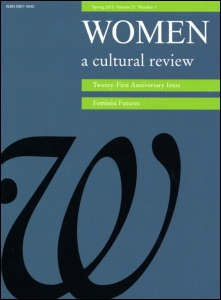
Women: a cultural review
Volume 21, Issue 3, Dec 2010
Pages 251-265
- DOI: 10.1080/09574042.2010.513489
- Print ISSN: 0957-4042
- Online ISSN: 1470-1367
Feminism in Another Language: Learning from ‘Feminist’ Histories of Iran and/or from Histories of Iranian ‘Feminism’ since 1830
This article draws on the experience of investigating and interpreting histories of ‘women’, ‘feminists’ and ‘feminism’ in Iran during the nineteenth and twentieth centuries. In particular it will consider the possibilities and limitations of cross-cultural uses of the category ‘feminist’ by historians in relation to the ‘fracturing’ or, as I would argue, ‘complexification’ of that category, and of the category ‘woman/women’ within recent scholarship. At a time when ‘Islamophobic’ and racialised analyses of Middle Eastern cultures, or world-views influenced by Islam, intersect with creative, if contentious, debates about the nature, value or even possibility of something called ‘Islamic feminism’, a historicised discussion of this question is timely and relevant. By considering histories of Iranian ‘women’ and/or ‘feminists’, those interested in the possibilities and problems of ‘feminist history’ can enrich their discussions of its conceptual underpinnings and actual practices. I will show how commonly used notions, such as ‘protest’, ‘gender’, ‘modernity’ and ‘femininity’, can be refined and enhanced by critical cross-cultural comparison, and will suggest some possible routes through the minefields of ethnocentric universalism and cultural relativism.